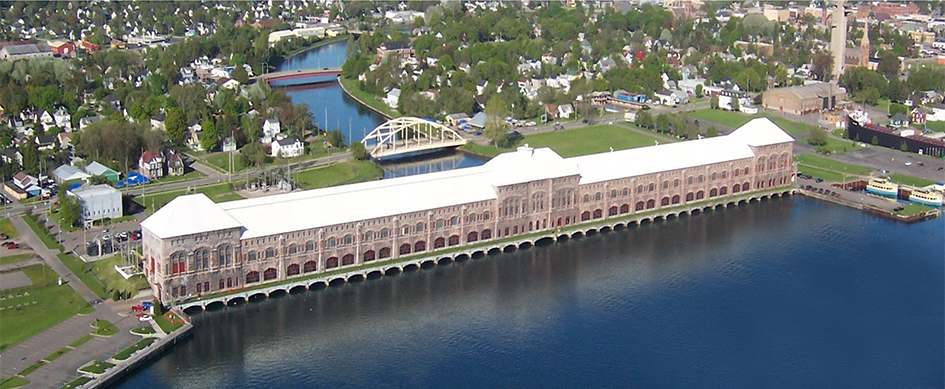powerhouse
July 20, 2018

the powerhouse
The shot is from the Canadian side; Frank and I are walking the downtown, river-front boardwalk. It’s the St. Mary’s River and the powerhouse of the Cloverland Electrical Cooperative on the American side. The massive structure has been a famous landmark when looking across the river and I finally found its history.
In 1885, with the state approval to divert water from the St. Marys River, the village of Sault Ste Marie voted to construct a canal and hydroelectric milling center. The St. Marys Falls Water Power Company was to dig the canal and construct the waterworks system.
The design agreed upon consisted of a canal 200 feet wide and 23 feet deep and running in length two and one half miles from the intake to the powerhouse at its end. In the canal, water traveled from six to seven feet per second. The bend would slow the water down in preparation for its entrance into the powerhouse.
In April of 1899 a Romanesque design was selected for the powerhouse. The design was both economical and would give the impression of power, importance, and stability to the building. The new design called for three large pavilions, one at either end of the structure and one in the center, thus breaking up the structure’s extraordinary length. The roof would be double pitched, also helping to counter balance the length of the powerhouse. 1

The image is from the Cloverland Electric Cooperative webpage. 1 the history of the powerhouse